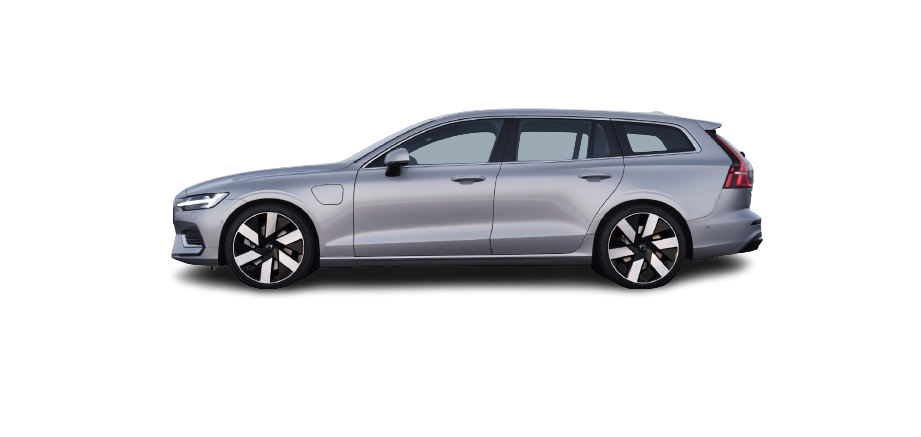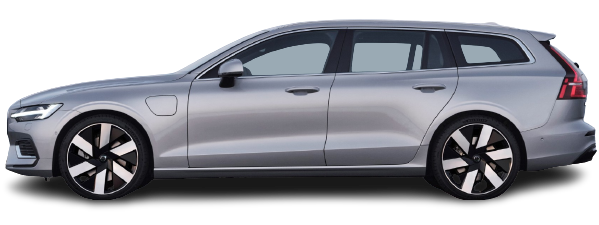Warning
- Always avoid inhaling fuel vapour and getting fuel splashes in the eyes.
- In the event of fuel in the eyes, remove any contact lenses and rinse the eyes in plenty of water for at least 15 minutes and seek medical attention.
- Never swallow fuel. Fuels such as petrol, bioethanol and mixtures of them and diesel are highly toxic and could cause permanent injury or be fatal if swallowed. Seek medical attention immediately if fuel has been swallowed.
- Fuel which spills onto the ground can be ignited.
- Switch off the fuel-driven heater before starting to refuel.
- Never carry an activated mobile phone when refuelling. The ring signal could cause spark build-up and ignite petrol fumes, leading to fire and injury.
Mixtures of various fuel types or use of fuels which are not recommended will invalidate Volvo’s guarantees and any supplementary service agreements; this is applicable to all engines.
Fuel consumption and CO2 emissions
Examples of causes of increased fuel consumption include:
- If the car is equipped with extra equipment that affects its weight.
- Driving style.
- If the customer chooses wheels other than those mounted as standard on the basic version of the model, this could increase rolling resistance.
- High speed causes increased air resistance.
- Fuel quality, road and traffic conditions, weather and the condition of the car.
A combination of the examples above could increase consumption considerably.
Extreme weather conditions, driving with a trailer or driving at high altitudes, in combination with poorer fuel quality than recommended, are factors that considerably increase the car’s fuel consumption.
Handling AdBlue®
Avoid inhaling vapour as well as contact with skin and eyes. Preferably use gloves that prevent irritation to sensitive skin when handling the fluid.
Warning
Action for first aid:
- For inhalation – get fresh air.
- For skin contact – wash the skin with soap and water.
- For contact with the eyes – rinse immediately with a lot of water.
- For ingestion – rinse the mouth thoroughly. Do not induce vomiting.
Seek medical attention if the discomfort remains or if a large quantity has been ingested.
AdBlue spilled on the ground, the car or painted surfaces must be rinsed thoroughly with water. Avoid releasing into the drainage system.
Storage
- AdBlue must be stored in tightly sealing original packaging at a temperature above -11 °C (12 °F) and below 30 °C (86 °F). The fluid must not be stored in direct sunlight.
- AdBlue freezes at -11 °C (12 °F) but can be used again when the solution has thawed.
Checking and filling with AdBlue®
- Check the AdBlue level regularly and top up if the message for low AdBlue level is shown in the driver display.
- The AdBlue consumption is dependent on driving style, if the AdBlue tank is allowed to drain completely then it will no longer be possible to start the car.
Note
- Never run the AdBlue tank dry. Fill the tank in good time before it is empty.
- If the tank is run dry, it will not be possible to start the engine after it is switched off – not the regular way or using aids.
- The only way to be able to restart after driving the tank empty is to refill AdBlue of specified quality, with the minimum being the quantity shown in the driver display.
Checking AdBlue level
- Press
- Press Car status.
- Press Oil and AdBlue.
The colour of the cursor changes from green to orange when less than 25% of the tank remains available, and changes to red when less than 10% remains.
Filling with AdBlue
When the AdBlue level starts to become low, a symbol illuminates in the driver display and the Refill AdBlue well in advance No restart after %1 %2 message is shown.
Do not overfill the tank.
Use AdBlue of the correct quality
- Open the fuel filler flap with a gentle press on the rear of the flap.
- Fill slowly/in portions, in order to avoid air pockets.
When filling from the AdBlue pump at a filling station, it is advisable to use the pump adapted for passenger cars. The AdBlue pump for heavy vehicles can also be used.
Wipe away any spilled AdBlue.
Exercise caution to prevent AdBlue from coming into contact with the car’s paintwork. If it does, rinse with plenty of water since the fluid can affect the paintwork.
Petrol station
- Use the car’s navigation system in order to find the route to the closest petrol station.
- When stopping to refuel it is a good idea to make a general inspection of the car as well, such as checking tyre pressure, bulbs, wiper blades, topping up washer fluid, etc.
Fuel tank – volume
| All engines | |
|---|---|
| Litres (approx) | 60 |
| US gallons (approx) | 15,9 |
Filling fuel
Refuelling the car at a petrol station
Fuelling instruction:
- Switch off the car and open the fuel filler flap.
- Choose fuel that is approved for use in the car. See information on approved fuels in the sections on “Petrol” and “Diesel” respectively.
Choose fuel that is approved for use in the car. See information on approved fuels in the section on “Petrol”. - Insert the pump nozzle in the fuel filler opening. The filler pipe has two opening caps. The pump nozzle must be pushed past both caps before refuelling is started.
- Do not overfill the tank but fill until the pump nozzle cuts out the first time.
>The tank is full.
Overfilled fuel in the tank can overflow in hot weather.
Topping up fuel from a fuel canWhen filling with a fuel can, use the funnel located in the foam block under the floor hatch in the cargo area.
- Open the fuel filler flap.
- Insert the funnel in the fuel filler opening. The filler pipe has two opening caps. The funnel’s pipe must be pushed past both caps before filling can be started.
Applicable to cars with fuel-driven auxiliary heater
Never use the fuel-driven heater when the car is in a filling station area.
Opening and closing the fuel filler flap
- The car must be unlocked for the fuel filler flap to be opened.
- Open the fuel filler flap with a gentle press on the rear of the flap.
- After refuelling is finished – close the flap with a gentle press.




